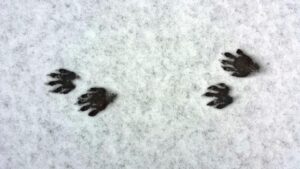Think you do not need to inspect your home for wildlife just because there is some ice and snow on the ground? Think again. In fact, the winter is just as good of a time as spring or summer for a home inspection. It is crucial to inspect your home regularly during the colder months to keep an eye out for wildlife intruders. Here’s what you need to know to make sure things run smoothly when you inspect your home:
Things You Need to Know
 Do you inspect your home’s exterior regularly for deteriorating fascia boards, peeling siding or holes in the attic vent? If not, you may be putting your family at risk for intrusion by a plethora of unwanted guests. Experts recommend assessing your residence conditions a few times a year, even during the colder months.
Do you inspect your home’s exterior regularly for deteriorating fascia boards, peeling siding or holes in the attic vent? If not, you may be putting your family at risk for intrusion by a plethora of unwanted guests. Experts recommend assessing your residence conditions a few times a year, even during the colder months.
Squirrels, skunks and raccoons may seek refuge from the cold in your chimney, attic, or under your porch/deck. While you are getting your home prepared for a change in the weather, ensure it is wildlife-proofed too.
Types of Wildlife to Look For
- Mice: While some rodents hibernate during the colder months, others, including the house mouse, are especially active during the winter. As the temperatures drop, mice look for a warm place to nest. Mice are inclined to search for dark, unoccupied areas to settle such as attics and basements. While seeming harmless, mice have been known to chew through electrical wires and cables, posing a substantial safety threat. Mice can also spread illnesses such as Hantavirus and salmonella.
- Raccoons: Raccoons are active during the winter months but will seek shelter in warm spots, such as underbrush piles or ground burrows in your yard. If left unchecked, raccoons can cause property damage or even spread rabies.
- Squirrels: Ground squirrels search for warm nooks and crannies to settle for the winter months. Squirrels, just like mice, can chew through electrical wiring and cables and potentially cause fires.
Where to Look
You should closely inspect any areas of your home that emit heat or are water drainage sources in the winter. Your chimney and roof vents should be inspected regularly. Here’s what you should know about checking these locations:
Chimney: Wildlife such as squirrels and raccoons are adept climbers and can easily reach your chimney by scaling the roof. Installing a cap on your chimney is the best way to discourage animals from sneaking inside. Chimney caps are mesh barriers that allow smoke and heat to escape while keeping wildlife out.
Roof vents: Your roof vents are another entry point for wildlife. When the temperatures drop, animals are drawn to the warm air leaving the vent. They may take an opportunity to enter your warm home if there are any visible gaps or tears in the vent cover. Keep the cover in good repair and regularly inspect it for any activity during the winter.
How to Identify Wildlife Tracks
It is common to see rabbit tracks in the snow throughout the winter months. Rabbit tracks are characterized by repeating patterns that form a tall, thin rectangle. Tracks are typically found in groups of four. Squirrel tracks are blockier, and rabbits have small circular toes while squirrels have long slender fingers.
Squirrel tracks are wide, blocky prints that may have visible skinny toes if fresh enough. You are likely looking at squirrels tracks if the patterns lead to a tree or other similar climbing structure.
Not all tracks found in the snow are from wildlife. House cats are everywhere in the colder months and tend to roam free and widely. You can identify cat tracks by looking for four toes on the front and hind feet.
Deer tracks are typical if you live in a rural or wooded area. Deer tracks are usually easily identifiable. These animals tend to step on top of their front tracks, leaving distorted marks in the snow with a smeared appearance. By identifying which animals are around your home, you can use the proper prevention methods to ensure they can’t enter into your home.
Work With an Expert
If you suspect your home has become a refuge for wildlife, you need to work with a wildlife prevention expert. Skedaddle Humane Wildlife Control specializes in safely removing all types of wildlife, including raccoons, mice, squirrels, bats, birds, skunks and insects. Our technicians are committed to humane wildlife removal. Contact us today to schedule a winter home inspection.




